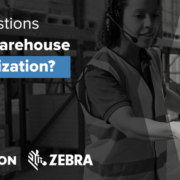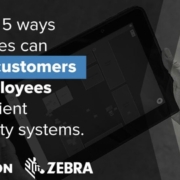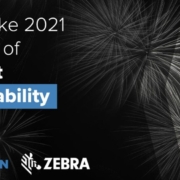Innovative technologies, such as machine learning and real-time locationing, have long served as prime examples of today’s modernization efforts in warehousing, yet these disruptive initiatives have also been seen as “too complex” and “far off” by many operations -largely because of common misconceptions such as:
- “Modernization requires extensive piloting and time to produce measurable ROI.”
- “Modernization is only suitable for large-scale operations.”
- “Modernization will replace human operators.”
- “Modernization is too expensive.”
With at least 69% of businesses claiming to have poor visibility into their supply chains, the time for misconceptions such as these is over. Because the digital era demands both speed and accuracy equally, outdated warehouse processes are no longer suitable to keep you competitive. However, modernization doesn’t have to be as complicated as you think, which is why we wanted to bring clarity to the four statements presented above:
- “Modernization requires extensive piloting and time to produce measurable ROI.”
Design and piloting allow your team to test and tweak your solution for best results; however, extensive testing can drain budgets while causing downtime due to longer training periods. Nevertheless, modern touchscreen interfaces and Android’s user-friendly platform are developed to help minimize training for faster deployment and ROI. As a matter of fact, TE-app converters such as Zebra’s All-Touch Terminal Emulation help convert “green-screen” apps right out of the box without backend modifications for faster integration.
- “Modernization is only suitable for large-scale operations.”
Working with a wide range of clients, from small and growing businesses to Fortune 500 companies, we’ve seen modernization solutions built with enterprise-grade technologies readily adapt in various-sized businesses. By streamlining multiple tasks through one device, technologies like the MC9300 computer can accomplish several specialized tasks through one intuitive interface, adapting to different workloads while accommodating growth.
- “Modernization will replace human operators.”
This is a common -and serious- concern regarding warehouse modernization, yet studies show that over 70% of warehouses actually plan to enhance human labor with partial automation. Simply put, while computers can intelligently gather and deliver information, human minds are still crucial to executing final decisions. For example, Zebra’s MotionWorks solution incorporates future-forward RFID locationing to track in-motion inventory and provide actionable insights that allow your workforce to make accurate plans to meet future needs and overcome challenges before they happen. By automating repetitive tasks, a modernized warehouse can also empower the workforce to deal with more high-level tasks.
- “Modernization is too expensive.”
Because effective modernization does not require a complete restructuring of your operations, it may actually be more affordable than previously imagined. On the flipside, outdated technologies can lead to high inaccuracies, missed compliance codes, multiple device servicing contracts, and frequent tech support and downtime – all greatly contributing to operational costs. As a Zebra Premier Solutions Partner, Avalon works hard to make modernization as seamless and cost-effective as possible. Upgrade legacy devices from any manufacturer through the GO Zebra Trade-In Program to get cash back rebates up to $650 per device towards your upgrade.
Every operation possesses its own unique requirements, which is why we know there may be other concerns and misunderstandings beyond what was covered. Contact us today to see how efficient modernization can help ease your doubts and turn challenges into opportunity.











